
Hello nature lovers! I hope you are having a beautiful day.
My garden is frequently visited by small butterflies that are attracted by the Cariaquito flowers (Lantana) that I planted in it. The way their flowers are clustered together, make it easy for these beautiful insects to find a lot of nectar in them. I really enjoy watching them as they flutter and feed.
¡Hola amantes de la naturaleza! Espero que tengan un hermoso día.
Mi jardín es frecuentemente visitado por pequeñas mariposas que son atraídas por las flores de Cariaquito (Lantana) que planté en él. La forma en que sus flores se agrupan, hace que estos hermosos insectos encuentren fácilmente una gran cantidad de néctar en ellas. Disfruto mucho observándolos mientras revolotean y se alimentan.
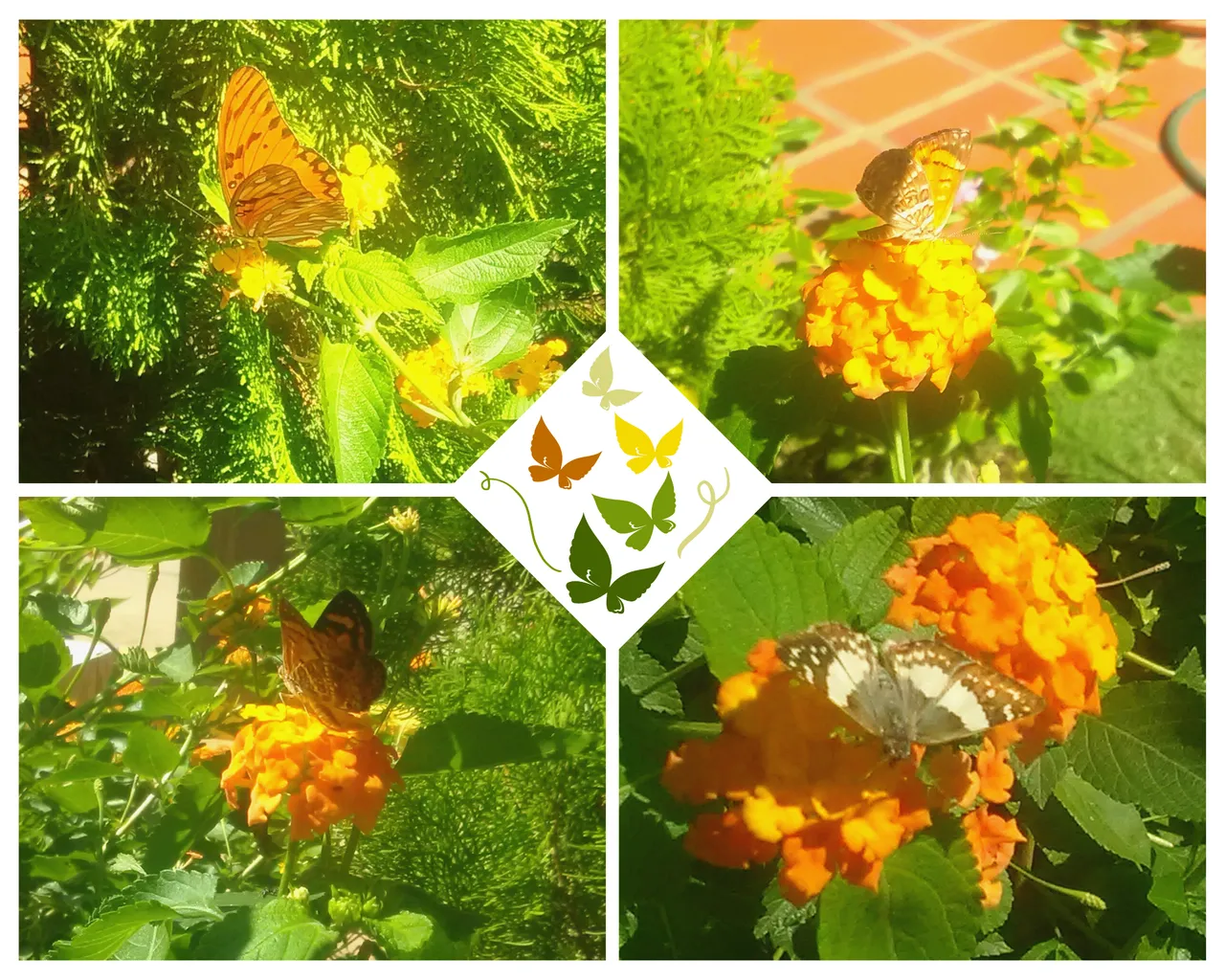
In this showy and colorful dance on my flowers, one brightly colored and large butterfly (wingspan between 8.9 and 10.2 cm), the Monarch butterfly whose scientific name is Danaus plexippus, stands out among the others. It does not come very often, but when it does, it is impossible not to notice it.
En esta vistosa y colorida danza sobre mis flores, destaca entre las demás una mariposa de brillantes colores y gran tamaño (envergadura de entre 8,9 y 10,2 cm), la mariposa Monarca cuyo nombre científico es Danaus plexippus. No viene muy a menudo, pero cuando lo hace es imposible no notarla.
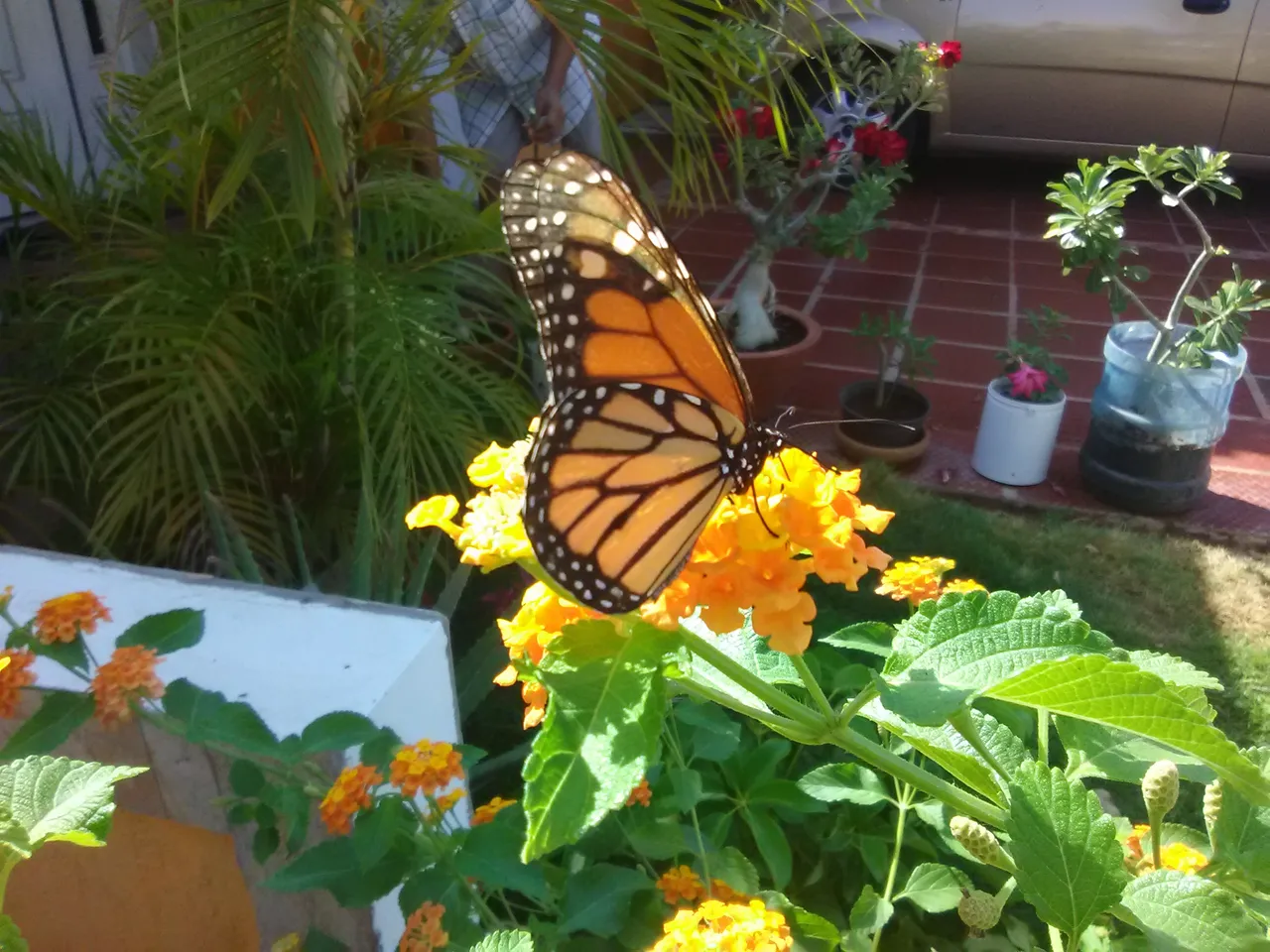
This amazing butterfly is famous among scholars of Lepidoptera, which is the name given to insects that undergo complete metamorphosis, that is, they go through the stages of eggs, larva, pupa, and adult-like my beautiful visitor.
While it feeding on the flowers of Cariaquito, I managed to record this interesting process.
Esta asombrosa mariposa es famosa entre los estudiosos de los lepidópteros, que es el nombre que reciben los insectos que presentan metamorfosis completa, es decir, pasan por las fases de huevos, larva, pupa y adulto como mi linda visitante.
Mientras se alimentaba de las flores de Cariaquito, logré grabar este interesante proceso.

Adult butterflies have a long tubular-shaped trunk (Proboscis) that coils into a spiral while at rest and which they uncoil to suck the nectar from the flowers they pollinate. Fortunately, I had the opportunity to photograph their long proboscis extended and introduced inside the flower sipping the nectar it offers.
Las mariposas adultas poseen una larga trompa en forma tubular (Espiritrompa) que se enrolla en forma de espiral mientras está en reposo y que desenrollan para chupar el néctar de las flores que polinizan. Afortunadamente, tuve la oportunidad de fotografías su larga trompa extendida e introducida en el interior de la flor sorbiendo el néctar que ella le ofrece.

After landing on several flowers repeating this process, it took flight and continued on its way.
As it flew away, I remembered some characteristics that this butterfly possesses that make it amazing and world-famous and that I want to share with you.
Luego de posarse en varias flores repitiendo este proceso, levantó su vuelo y siguió su camino.
Mientras se alejaba, recordé algunas características que posee esta mariposa que la hacen asombrosa y mundialmente conocida, y que quiero compartir con ustedes.
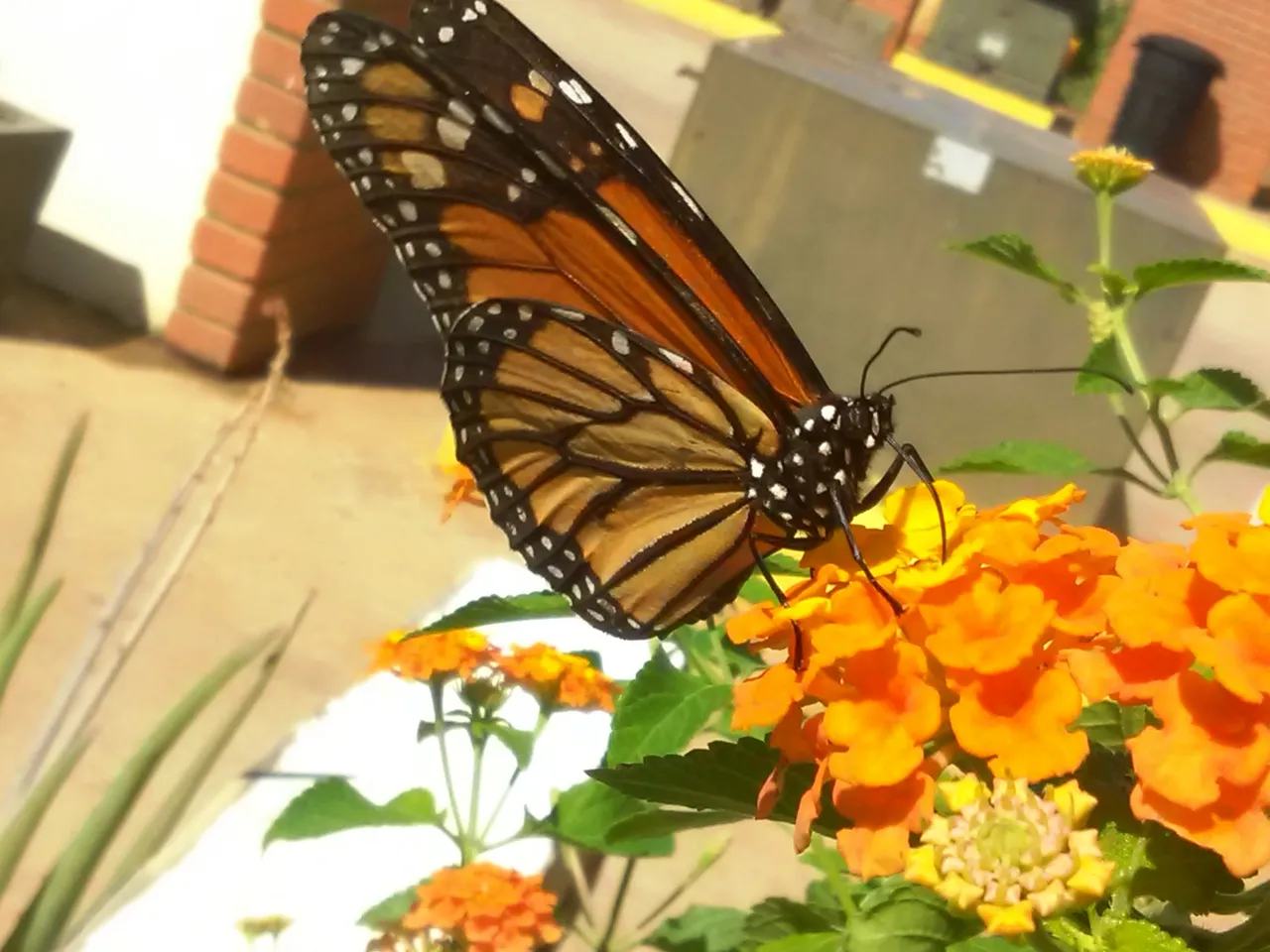
Its beautiful and striking coloration is a warning to its predators about its toxicity and bad taste.
The Monarch has beautiful orange, black and white coloration on its wings due to a toxic component in the plant on which they lay their eggs and on which their larvae feed only, called milkweed (Asclepias). This makes these butterflies depend on this plant to reproduce. Without Asclepias, there aren't Monarchs!
Su hermosa y llamativa coloración es una advertencia a sus depredadores sobre su toxicidad y mal sabor. La Monarca tiene una hermosa coloración naranja, negra y blanca en sus alas debido a un componente toxico que posee la planta en la cual ponen sus huevos y de la que sus larvas se alimentan únicamente, llamada Algodoncillo (Asclepias). Esto hace que estas mariposas dependan de esta planta para reproducirse. ¡Sin Asclepias no hay Monarcas!
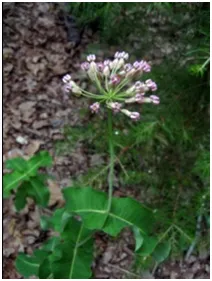
Wikimedia Commons CC0
They accumulate these toxins in their organism and it serves as a defense mechanism against predators, who suffer from vomiting when they eat them, making them not want to eat them again.
Acumulan estos tóxicos en su organismo y le sirve como un mecanismo de defensa ante sus depredadores, quienes sufren de vómitos cuando se las comen haciendo que no vuelvan a querer comerlas.

Lives longer than other butterflies
A butterfly normally has a life cycle of 24 days. Monarch butterflies that live in warm climates and do not migrate live for 3 to 6 weeks.
There is a generation of Monarchs born in late summer and early fall known as the Methuselah generation that has a life cycle of 9 months, which allows it to make a long round trip migration.
Vive más tiempo que otras mariposas
Una mariposa normalmente tiene un ciclo de vida de 24 días. La mariposa Monarca que vive en climas cálidos y no migra viven de 3 a 6 semanas.
Hay una generación de Monarcas nacidas a finales del verano y principio del otoño que se conocen con el nombre de generación Matusalén que tiene un ciclo de vida de 9 meses, lo cual le permite realizar un largo viaje de migración de ida y vuelta.
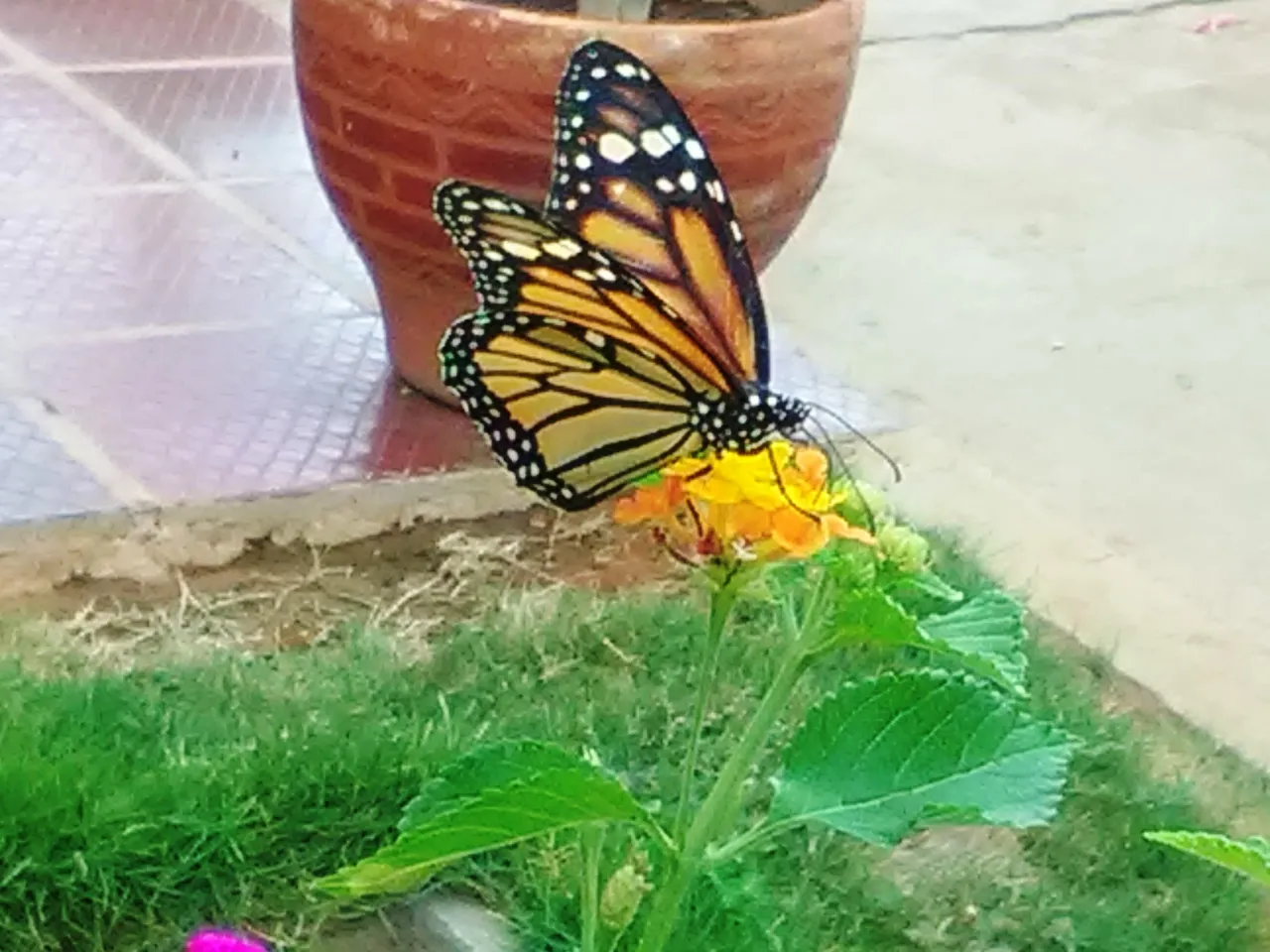
There are physical differences between the female and male Monarchs
The female Monarch has thick black veins on its wings that are thinner than the male. The male is slightly larger than the female and also has a black circle on the underside of each wing which is a gland that produces pheromones and is very important for mating.
Existen diferencias físicas entre la Monarca hembra y la Monarca macho
La Monarca hembra tiene venas gruesas de color negro en sus alas que en el macho son más delgadas. El macho es ligeramente más grande que la hembra y además, tiene en la parte inferior de cada ala un círculo negro que es una glándula que produce feromonas y que es muy importante para el apareamiento.
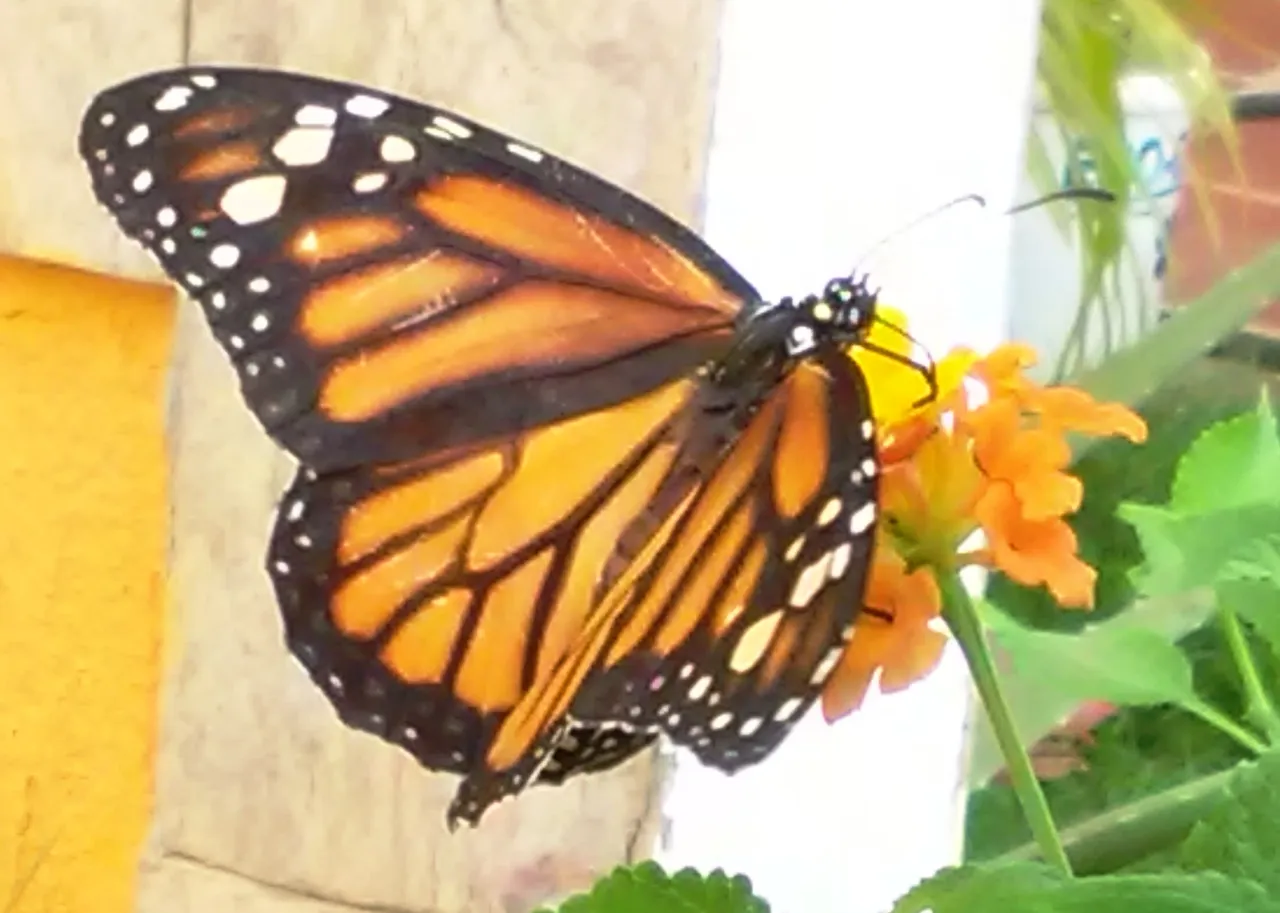

It performs the largest migratory phenomenon among insects.
The migration of these insects is internationally known because it is a massive round-trip migration made by millions of Monarch butterflies, following the route that previous generations traced. In other words, Monarch butterflies have never gone to the hibernation site.
The generation known as Methuselah is the only one that makes this long journey from Canada and the United States to the forests of Michoacan in Mexico, where they stay for two months and then return.
Realiza el mayor fenómeno migratorio entre los insectos
La migración de estos insectos es internacionalmente conocida debido a que es una migración masiva de ida y vuelta que hacen millones de mariposas Monarca, siguiendo la ruta que generaciones anteriores trazaron. Es decir, que las mariposas Monarcas nunca han ido al sitio de hibernación.
La generación conocida como Matusalén es la única que realiza esta larga travesía que parte desde Canadá y EEUU hasta los bosques de Michoacán en México, en donde permanecen por dos meses para luego emprender el viaje de regreso.

How do they know which route to take? How do they orient themselves to their hibernation site?
Studies have shown that Monarch butterflies use their antennae to orient themselves with respect to the sun. In addition, they use their circadian clock to correct their flight and maintain a southerly course, regardless of whether the sun changes its position.
These statements are the results of experiments in which several butterflies were attached to an external flight simulator that could calculate the insects' flight direction. Some of these butterflies had their antennae removed and others did not. Those that had their antennae maintained their southward orientation while those that did not were unable to orient themselves.
¿Cómo saben qué ruta tomar? ¿Cómo se orientan a su sitio de hibernación?
Los estudios han demostrado que las mariposas monarca utilizan sus antenas para orientarse con respecto al sol. Además, utilizan su reloj circadiano para corregir su vuelo y mantener un rumbo hacia el sur, independientemente de si el sol cambia de posición.Estas declaraciones son el resultado de experimentos en los que varias mariposas se conectaron a un simulador de vuelo externo que podía calcular la dirección de vuelo de los insectos. A algunas de estas mariposas se les quitaron las antenas y a otras no. Los que tenían sus antenas mantuvieron su orientación hacia el sur, mientras que los que no las tenían no pudieron orientarse.
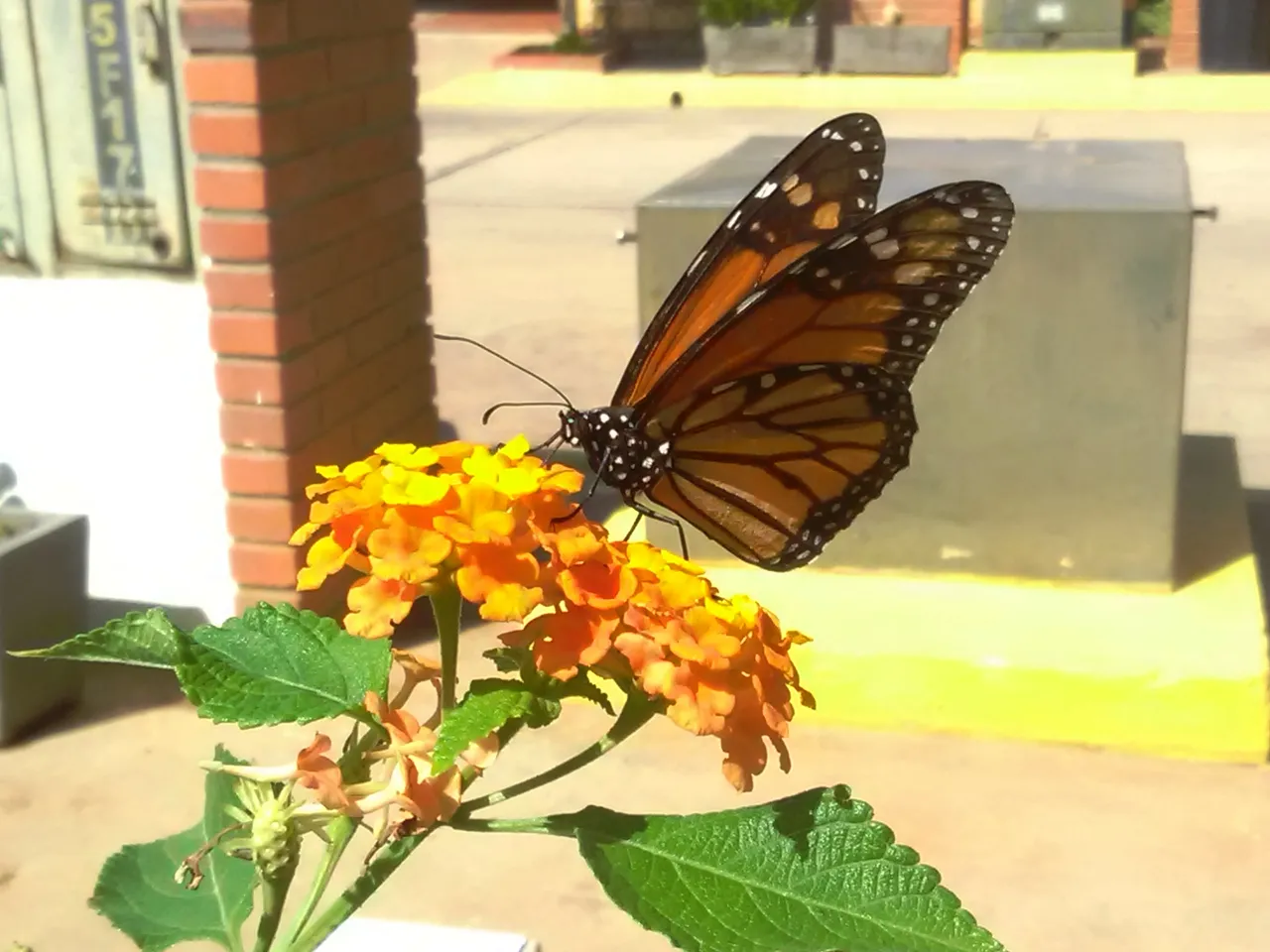
Monarch butterflies play an important role as pollinators, as they make their great migration and move the pollen of various plants throughout their journey.
Now you know why this butterfly is so amazing and so well known. I hope you keep visiting my little garden to continue enjoying its beautiful colors.
See you soon nature lover.
Las mariposas monarca juegan un papel importante como polinizadores, ya que realizan su gran migración y mueven el polen de varias plantas a lo largo de su recorrido.
Ahora sabes por qué esta mariposa es tan asombrosa y tan conocida. Espero que sigas visitando mi pequeño jardín para seguir disfrutando de sus hermosos colores.
Hasta pronto amante de la naturaleza.
The edits were made in the Canva application.
Las ediciones se realizaron en la aplicación Canva.
References / Referencias
- Monarch butterfly Danaus plexippus
- https://es.wikipedia.org/wiki/Danaus_plexippus#cite_note-Garber-14)
- Características de la mariposa monarca
- https://matadornetwork.com/es/datos-increibles-sobre-la-mariposa-monarca-reina-de-michoacan/
- Neural Integration Underlying a Time-Compensated Sun Compass in the Migratory Monarch Butterfly
- https://www.nationalgeographic.es/animales/mariposa-monarca#:~:text=de%20una%20mariposa-,Las%20mariposas%20monarca%20son%20conocidas%20por%20la%20incre%C3%ADble%20migraci%C3%B3n%20masiva,cercana%20a%20los%205.000%20kil%C3%B3metros.


